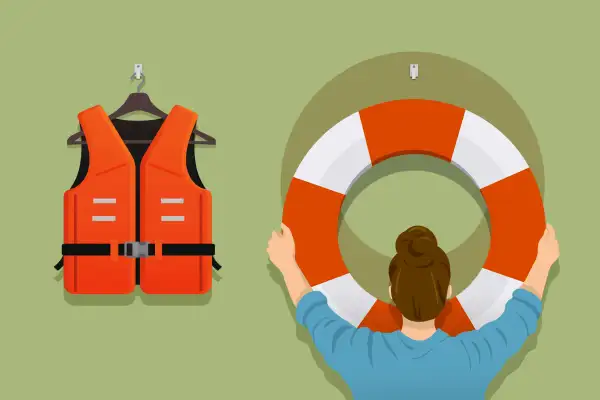Converting Your Term Life Insurance: Here's When Switching to Whole Life Makes Sense

Life insurance that lasts for a specified term is simple and relatively affordable; for many people, it’s all the protection they ever need. But for some, it makes sense to consider converting term life insurance into a policy that lasts for as long as they live.
Term life insurance policies typically include a little-known provision that lets you convert them into permanent life insurance, the type that never expires and whose types include whole life and universal life. The option is "somewhat under the radar,” says Barb Pietrangelo, a financial planner and insurance expert at Prudential. Yet a term life insurance conversion, she says, could be an easy and cost-effective way to make your life insurance go the distance, especially if you’ve developed health issues since you got the original policy.
For all of its pluses, a big downside of term life insurance is that you don’t get any return on your investment after the policy ends. “Term insurance is generally the least expensive insurance when you're younger," says Pietrangelo. "The problem is, it might not be your most effective insurance when you’re older.”
Here’s a primer to converting your term life insurance into a permanent policy, including a step-by-step rundown of how to do so.
The pros and cons of converting term life insurance
With term life insurance, you and your family are protected for the length of the policy -- which usually ranges between 5 and 30 years. But after the term is up, so is your coverage.
That expiration may be fine with you if it happens after your financial obligations to your family are complete. But converting the policy to permanent allows you to pass along a death benefit to your survivors regardless of when you die. And to do so without the complications of getting a brand-new policy -- like fresh medical issues.
“If health is a factor and you still need coverage, that’s when a conversion might make sense,” says Curtis Johnston, vice president and wealth advisor at Girard in King of Prussia, Pa. Johnston says, since “in a lot of cases, you keep the same health rating” as when you were young and healthy and taking out the term policy.
Indeed, your ability to get a policy -- at least at an affordable rate -- may be at stake, Johnston says. “If you had a preferred rate [when you got the term policy], and your health has fallen, your only option might be to convert,” he says.
Conversion to a permanent policy -- with the benefit of your younger, healthier medical record -- may well result in lower costs than getting a brand-new policy. But your premiums will go up if you convert a term policy to a permanent one, since policies for the latter are far more expensive than for term coverage. Prepare to pay between three and five times as much, warns Pietrangelo.
Also, even if your current health conditions are ignored in the conversion, your age won't be. The older you are, as a rule, the more you pay for life insurance. So expect the impact of your age on premiums to contribute to the sticker shock of buying a new policy.
On the other hand, your costs won’t rise as you get older; permanent life premiums stay steady for as long as you hold the policy. And after a few years, unlike with term life insurance, the policy will begin to accumulate a cash value, which you can draw upon to pay the premiums or use as collateral for a loan, if you wish.
Check your eligibility for conversion
The ability to convert a policy isn’t universal. And even when it’s allowed, the option may eventually expire; you may need to convert within the first five, 10 or 20 years of the policy, as examples.
If you currently have a term policy, pull it out and read the fine print, Pietrangelo says. If you have the option of a term conversion, bring that up with your financial advisor if you’re working with one. Even if the policy will expire soon, “it’s still a piece of your financial puzzle,” she says, and “it doesn’t hurt to stay on top of it.”
Decide how much benefit to convert
You can convert up to the amount of the term policy’s death benefit, but that doesn’t mean you should necessarily move the full amount to a new policy. The more you convert, after all, the higher your premiums for the converted policy.
Many convertible policies permit partial conversions, which could make the conversion more affordable. If, for instance, you had a $500,000 term policy, you could do a partial conversion into a permanent policy with a $100,000 death benefit.
Increasing the death benefit probably won't be an option for the converted policy. You generally can’t convert a term policy into a permanent policy with a higher value, even if you're willing to pay the premiums to do so.
Relatively healthy? Shop around
One drawback to a term conversion is a limited choice of policies. You can’t really shop around for better rates or benefits; you’re limited to whatever permanent life insurance products your existing carrier offers.
“A lot of insurance companies don’t have an attractive permanent policy to convert to,” Johnston says. If you’re still relatively young and in robust health, you might have more options available to you simply by shopping around, either with an independent insurance broker or online.
Begin that work early, Johnston recommends. “A lot of times, people will say they need coverage at 65,” or whenever their term policy expires, and beginning their research close to that date, Johnston says. But he urges thinking about continuing coverage well in advance of any deadline in order to have a better selection of policy types and more competitive prices. “I like getting permanent coverage as fast as possible.”
Johnson especially recommends an early start to shopping in the current insurance marketplace. Customers seeking to convert term insurance today may face the same frustrations as someone shopping for a new permanent policy, he says. The COVID-19 pandemic and the low interest rate environment have made some whole and universal life insurance policies more expensive and harder to obtain, particularly for older customers.
Convert your policy
If you’ve done your due diligence and decided that a conversion is the best option for you, contact your insurance company to get the ball rolling. Since there’s no health exam and a conversion doesn’t have to go through the typical (extensive) underwriting process, the actual conversion itself is fairly straightforward. If you have a term policy with a conversion provision, the process itself will likely consist of little more than filling out some forms. The conversion can be completed in a matter of days.
